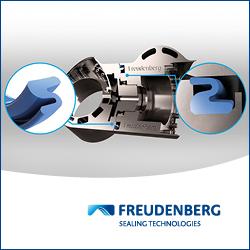MathWorks Announces Built-in Simulink Support for Arduino, BeagleBoard, and LEGO MINDSTORMS NXT
With one click, engineers run Simulink control system and signal processing algorithms in hardware
NATICK, Mass.--MathWorks today announced that Simulink models can now run directly on Arduino, BeagleBoard, and LEGO MINDSTORMS NXT platforms. These popular, low-cost devices are widely used in academia for hands-on teaching of robotics, mechatronics, audio signal processing, computer vision, and other engineering applications. Simulink models can run standalone on these hardware platforms or in tandem with a connected PC.
"Simulink built-in support for hardware is a big boost to project-based learning," said Dr. Farid Golnaraghi, professor and director of Mechatronic Systems Engineering at Simon Fraser University. "Our engineering students who learn control theory by creating and running models in Simulink can now easily test and tune their algorithms on hardware, without knowing embedded systems."
"Multifunction microprocessor boards are a tremendous learning resource," said Tom Gaudette, principal academic evangelist at MathWorks. "Adding targeted support was a logical step, given the widespread use of Model-Based Design with Simulink in engineering schools and industry. With Simulink and a low-cost Arduino, BeagleBoard, or LEGO MINDSTORMS NXT robot, a student can learn industry best practices for DSP, robotics, and mechatronics design."
Simulink provides built-in support for the following platforms:
*Arduino Uno and Mega 2560 microcontroller boards for robotics, mechatronics, and hardware-connectivity tasks
*BeagleBoard-xM single-board computers for audio, video, and digital signal processing
*LEGO MINDSTORMS NXT robotics platform for robotics applications
Simulink built-in support for hardware is available in MathWorks Release 2012a, including MATLAB and Simulink Student Version. Visit www.mathworks.com/products/simulink/simulink-targets for additional information.
About MathWorks
MathWorks is the leading developer of mathematical computing software. MATLAB, the language of technical computing, is a programming environment for algorithm development, data analysis, visualization, and numeric computation. Simulink is a graphical environment for simulation and Model-Based Design of multidomain dynamic and embedded systems. Engineers and scientists worldwide rely on these product families to accelerate the pace of discovery, innovation, and development in automotive, aerospace, electronics, financial services, biotech-pharmaceutical, and other industries. MathWorks products are also fundamental teaching and research tools in the world's universities and learning institutions. Founded in 1984, MathWorks employs more than 2400 people in 15 countries, with headquarters in Natick, Massachusetts, USA.
For additional information, visit www.mathworks.com.
Featured Product

IP Seals for Robots
Freudenberg Sealing Technologies' IPRS (Ingress Protection Seals for Robots) provides reliable protection for robotic systems operating in harsh environments. Designed to prevent dust, moisture, chemicals, and wear from compromising performance, IPRS extends service life and reduces maintenance. The adaptive Z-shaped geometry ensures sealing integrity under continuous motion, making it ideal for high-speed automation and outdoor applications. Manufactured with high-performance elastomers such as Fluoroprene XP and EPDM, IPRS offers exceptional resistance to lubricants, cleaning agents, and extreme temperatures. This makes it the perfect solution for six-axis robots, SCARA robots, AMRs, AGVs, and cobots.
With its low-friction design and durable materials, IPRS enhances energy efficiency and operational reliability in industrial and autonomous robotics. Learn more about our IPRS Seals
